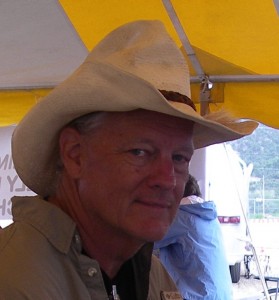[print_link]
Build a fiberglass rod, how do they do that?
First a steel mandrel is machined to what will become the inside diameter and taper of the finished rod blank. Each rod weight and action will have a different size mandrel. The uncut blank that I started with would have had a full length mandrel. Contemporary graphite rods often have a built in ferrule. The butt end of one section slips over the tip end of its mate. These have to be manufactured as separate sections.
The material that wraps the mandrel is fiberglass with many more fibers running lengthwise than crosswise to the rod. It is impregnated by the supplier with a resin glue, and is then called pre-preg. The fiber specifications, their orientation and the resin used are all design parameters that determine the rod characteristics. Early rods were made of E-glass and the later rods of S-glass. I have to assume that my rod is S-glass because that is what would have been in inventory when Wright-McGill stopped making fiberglass rods. S-glass is somewhat stronger, and can produce a stiffer and lighter rod.
The pre-preg is wrapped around the mandrel, and that is wrapped with a heat shrinking cellophane. Here again, the wrapping technique impacts the finished rod’s performance. At this point the mandrel is hung in an oven to cure. The cellophane shrinks when heated. This puts pressure on the pre-preg in which the resin has liquefied. The excess resin is squeezed out, and the rod continues to cure — harden.
The mandrel is removed from the cured rod as is the cellophane. At this stage spiral ridges caused by the uneven cellophane pressure remain. These were most often, but not always, sanded off. My blank has the ridges. I don’t know if they would have been sanded. Not all companies sanded the blanks, but I believe W-M did. I’m leaving mine. By the way, W-M started making fiberglass rod in 1952 and continued into the early 70’s. At one point they were making 500 a day. Most would have been spinning and casting rods.
If you are interested is further detail, “The Technology of Fly Rods” by Don Phillips is an excellent resource. It’s out of print, but available through inter-library loan. I think I will leave rod strength for the next post.

Leave a Reply